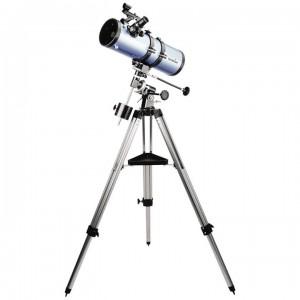
Essential Information
| Location |
Royal Observatory
|
|---|---|
06 Jul 2015
There’s always plenty to see in the night (and daytime) sky, and this month we’ve got meteors, conjunctions and a few particular stars and planets to look out for. The Jupiter/Venus conjunction has been keeping sky-watchers happy for the first few days of July - you can see some more pictures on our Facebook timeline.

8 July – a last quarter Moon will be visible all morning. Try looking for the Aristarchus crater in the Ocean of Storms on the Moon's left side, with long shadows cast by the crater walls. This is a great time to take a photograph with a long telephoto lens or through a telescope.

If you need to get hold of a telescope or binoculars, do check out our range of equipment recommended by Royal Observatory astronomers.
9 July – look for Uranus and the Moon in conjunction, less than a degree apart after 01.00 in the morning. Uranus is too faint to see with the naked eye – try finding it through a telescope.
16 July – New Moon. The Moon will also be at perihelion (at its closest to the Sun).
23 July – look for the waxing crescent Moon and the bright blue star Spica in the constellation Virgo in the south-western sky.
24 July – first quarter Moon will rise at 14.00 and eventually set at half past midnight.
25 July – the dwarf planet Ceres will be at opposition, meaning it will be opposite to the Sun in the sky and closest to us. Ceres is the only dwarf planet located in the Asteroid Belt.
26 July – Saturn will be in conjunction with the Moon in the evening. In the same part of the sky, look also for Antares, the bright star of the constellation Scorpius.
27-28 July – Delta Aquarids meteor shower – you may be able to see up to about 15 meteors per hour in the pre-dawn sky. The meteors get their name from the constellation Aquarius, which contains the shower’s ‘radiant’ – the point where the meteors appear to radiate out from. Unfortunately, a waxing gibbous Moon will make it harder to see the fainter streaks. We advise heading out to the countryside to get a better chance of seeing the meteors. And from around 23 July, some Perseid meteors should also start to be visible, building slowly towards the 12-13 August peak of what’s usually the year’s biggest and most popular meteor shower.
31 July – full Moon – this is when the Moon is on the opposite side of the Earth to the Sun. It will rise in the east at around 20.30 and reach its highest point at half past midnight. Don’t forget to share your pictures of the night sky and space with us on Twitter @ROGAstronomers or via Facebook.
Space and observation events at the Royal Observatory
The Sky Tonight live planetarium show – come on a fantastic tour of what you can see for yourself in the night sky, presented by one of our astronomers. Shows daily. This month is your last chance to see beautiful space imagery in the current Astronomy Photographer of the Year exhibition, which closes 19 July. Other upcoming events at the Observatory include: Silver Screen Science-Fiction: A Scanner Darkly (2006) (Cert: 15) 9 July, 19.00-21.30 In a not-too-distant future an undercover cop becomes involved in using a dangerous new drug, and begins to lose his own identity. Based on the novel by Philip K. Dick, and starring Keanu Reeves, Winona Ryder, Robert Downey Jr. and Woody Harrelson.